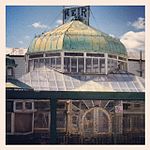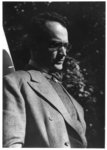List of ambassadors of Tuvalu to the United States
Ambassadors of Tuvalu to the United StatesLists of ambassadors of TuvaluLists of ambassadors to the United StatesPermanent Representatives of Tuvalu to the United Nations
The Tuvalulan Ambassador in New York City is the official representative of the Government in Funafuti to the Government of the United States. Since 2010, the Tuvaluan ambassador to the United States has also been appointed as Tuvalu’s Permanent Representative to the United Nations. Tuvalu–United States relations
Excerpt from the Wikipedia article List of ambassadors of Tuvalu to the United States (License: CC BY-SA 3.0, Authors).List of ambassadors of Tuvalu to the United States
3rd Avenue, New York Kings County
Geographical coordinates (GPS) Address Nearby Places Show on map
Geographical coordinates (GPS)
| Latitude | Longitude |
|---|---|
| N 40.663882 ° | E -73.997221 ° |
Address
3rd Avenue 685
11232 New York, Kings County
New York, United States
Open on Google Maps






